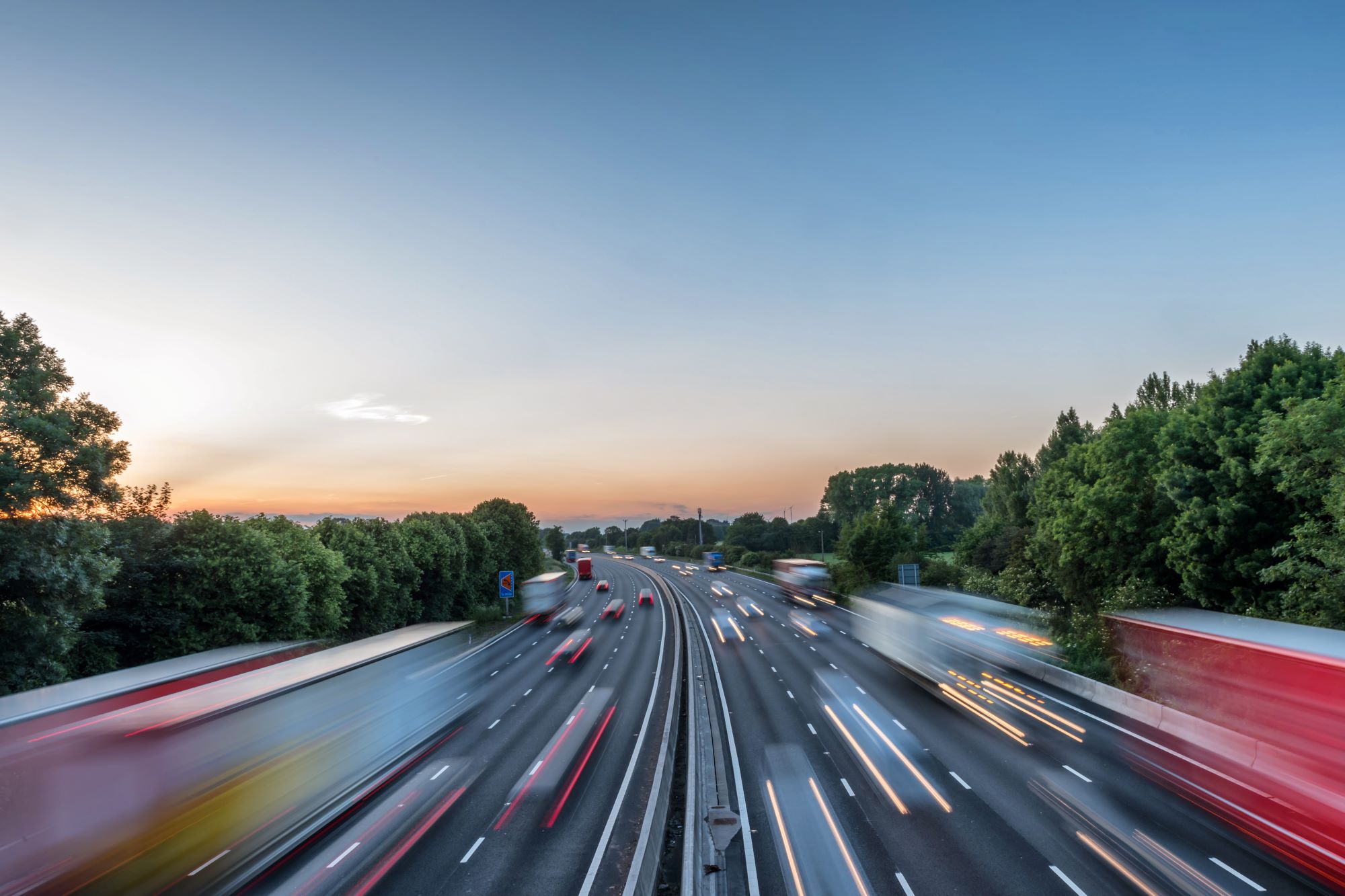
Susie Jones
Quali sono le implicazioni dei limiti di velocità a 20 miglia orarie per le flotte?
Creato: 16/04/2025
•
Aggiornato: 16/04/2025
Nel 2023, 188 mezzi pesanti sono stati coinvolti in collisioni con esito mortale, un dato in calo rispetto al 2022 ma comunque preoccupante. Questi incidenti potrebbero essere dovuti a diversi fattori, come la stanchezza del conducente, la scarsa manutenzione del veicolo, le condizioni meteorologiche o le azioni di altri utenti della strada. Tuttavia, i dati dell'associazione di beneficenza per la sicurezza stradale Brake suggeriscono che il 58% dei decessi legati alla strada ha segnalato la velocità come fattore di sicurezza stradale. In questo blog analizzeremo come l'implementazione di limiti di velocità di 20 miglia orarie potrebbe avere un impatto sulle operazioni delle flotte e ridurre il numero di incidenti mortali.
Dove avvengono gli incidenti con i mezzi pesanti?
Secondo [EROS] (https://www.insurancerevolution.co.uk/blog/hgv-driving-safety-statistics/), solo il 10% delle collisioni di mezzi pesanti avviene in autostrada, mentre il restante 90% è più probabile che avvenga su strade urbane o rurali. Le strade rurali presentano ai conducenti di mezzi pesanti spazi ristretti, curve strette e interazioni con utenti della strada vulnerabili come ciclisti e pedoni, aumentando la probabilità di incidenti. Le aree urbane rappresentano un rischio maggiore per i conducenti di camion a causa della maggiore densità di traffico, delle frequenti soste, dell'attività dei pedoni e della complessa configurazione delle strade, che, unita all'imprevedibilità delle strade urbane, le rende più pericolose per i conducenti di camion.
L'impatto delle zone a 20 miglia orarie.
I dati pubblicati dal [Governo gallese] (https://motortransport.co.uk/industry-news/fleetcheck-urges-operators-to-back-calls-for-wider-use-of-20mph-speed-limits/25490.article) hanno mostrato 100 vittime in meno sulle strade urbane nel 2024 rispetto allo stesso periodo del 2023 prima dell'applicazione del limite di velocità di 20 miglia orarie nelle aree urbane.
Il programma è sostenuto da organizzazioni come Brake e Cycling UK, e ora gli specialisti della gestione delle flotte FleetCheck incoraggiano le aziende di trasporto a sostenere il programma. Essi sostengono che il passaggio da 30 mph a 20 mph avrà un impatto minimo sull'efficienza della flotta e rafforzano l'idea che questo sistema salverebbe vite umane ogni anno.

Cosa pensano le flotte e gli autisti del limite di velocità a 20 miglia orarie?
Secondo FleetCheck, gli operatori del settore del trasporto merci hanno espresso sentimenti contrastanti nei confronti dell'iniziativa. Alcuni hanno visto i cambiamenti come un ostacolo all'efficienza, sostenendo che i limiti di velocità più bassi potrebbero costringere alcune flotte a ridurre il numero di consegne che possono effettuare in un determinato periodo.
Gli autisti sulle pagine dei social media di SNAP hanno espresso forti sentimenti nei confronti di questa proposta. Un autista ha commentato:
"Chi sosterrà altre zone a 20 miglia orarie? Il problema è l'intero standard di guida. Da quando siamo usciti dall'isolamento, lo standard di guida è diabolico, sia per le auto che per i furgoni e i camion".
Il sentimento è rimasto invariato sui social, con molti che non hanno appoggiato il cambiamento.
I vantaggi di un maggior numero di zone a 20 miglia orarie.
Le zone a velocità ridotta offrono diversi vantaggi agli autisti di camion.
Le velocità ridotte migliorano i tempi di reazione e riducono gli spazi di arresto, rendendo più facile evitare le collisioni, soprattutto nelle aree urbane.
Gli autocarri hanno maggiori probabilità di subire una minore usura del veicolo con limiti di velocità ridotti.
Gli ostacoli che le aziende di flotte potrebbero incontrare.
Come già accennato, alcune società di flotte temono che la riduzione dei limiti di velocità possa ridurre il numero di consegne che possono effettuare in un determinato periodo. Le flotte potrebbero anche affrontare le seguenti sfide:
Tempi di percorrenza più lunghi: con ripercussioni sulle consegne sensibili ai tempi, sulla programmazione e sulle aspettative dei clienti.
Pianificazione del percorso: le aziende potrebbero dover modificare i percorsi per tenere conto delle velocità ridotte.
Conformità: sarà fondamentale investire nella formazione dei conducenti per garantire il rispetto dei nuovi limiti di velocità.
Sebbene questi problemi possano porre ulteriori sfide alle aziende di flotte, molti possono essere gestiti in modo proattivo. Molti sostengono che i vantaggi a lungo termine in termini di sicurezza superano gli ostacoli.

I numeri parlano da soli.
In una campagna rivisitata intitolata Autostrade pericolose, SNAP ha identificato le località più pericolose della GB. Approfondiamo la questione per scoprire quali strade potrebbero beneficiare di un limite di velocità ridotto.
Lo SNAP ha scoperto che il Sud-Est ha le strade più pericolose. Il Kent ha le strade più pericolose della Gran Bretagna e propone un obiettivo di zero vittime della strada sulla rete autostradale del Kent entro il 2050. Quali sono le strade più preoccupanti?
La A254:** Una strada breve che si snoda per appena quattro miglia, ma che è stata nominata la strada più a rischio della Gran Bretagna nel 2018. Il rapporto ha individuato un tratto della A254 tra l'incrocio con la A28 a Margate e l'incrocio con la A255 vicino a Ramsgate. Il limite di velocità su questo tratto varia tra le 30 e le 40 miglia orarie - le aree edificate e il forte flusso di traffico proveniente dal porto di Dover rendono questa strada particolarmente pericolosa per ciclisti, pedoni e altri utenti della strada. Questo tratto di strada potrebbe beneficiare di limiti di velocità più bassi?
La A252: Famosa per l'alto tasso di incidenti, la A252 si estende per 8,7 miglia. Nel 2020 sono iniziati i lavori per ridurre il numero e la gravità degli incidenti; tra i cambiamenti, la riduzione da 60 a 50 miglia orarie su questo tratto, tranne nei casi in cui sono in vigore limiti più bassi. Tuttavia, è sufficiente per scrollarsi di dosso la reputazione di strada tra le peggiori della Gran Bretagna?
Anche il Surrey e l'Essex erano in cima alla lista e hanno avuto un totale combinato di 30.378 incidenti negli ultimi cinque anni. L'alto tasso di incidenti nel Surrey può essere attribuito al mix di città popolate e strade rurali. La vicinanza a Londra e alle principali autostrade ha provocato un maggior numero di collisioni.
La M25: Conosciuta anche come London Orbital Motorway, la M25 è una delle strade più trafficate della Gran Bretagna ed è anche la seconda tangenziale più lunga d'Europa. Tra il 2007 e il 2016 sono stati registrati 7.673 incidenti e 80 morti. Essendo un'autostrada di importanza cruciale, un adeguamento della velocità a 20 miglia orarie sarebbe ridicolo. Tuttavia, la M25 beneficerebbe di zone a velocità limitata?
A3: La A3, che si estende per 67 miglia, può essere una strada impegnativa da percorrere a causa dell'elevato volume di traffico, dei limiti di velocità e dei tratti in cattive condizioni stradali.
Domande frequenti
Qual è il limite massimo di velocità per i camion?
I conducenti di autocarri devono attenersi a rigide norme di velocità. Queste limitazioni sono previste per tenere conto delle dimensioni, del peso e della capacità di frenata di un camion.
Un autocarro di peso superiore a 7,5 tonnellate è limitato a una velocità massima di 50 miglia orarie.
Strade a doppia carreggiata: 60 miglia orarie è il limite massimo di velocità per gli autocarri di peso superiore a 7,5 tonnellate.
*Autostrade: * Gli autisti di camion non devono superare le 60 miglia orarie in autostrada.
Norme sui limitatori di velocità nel Regno Unito Nel Regno Unito, i limitatori di velocità devono essere installati su qualsiasi autocarro per limitare la velocità massima che il veicolo può raggiungere.
Requisiti legali nel Regno Unito: Tutti gli autocarri di peso superiore a 3,5 tonnellate devono avere un limitatore di velocità impostato a 56 miglia orarie.
Come funzionano: I limitatori di velocità limitano l'erogazione di carburante al motore una volta che il veicolo raggiunge una velocità prestabilita, assicurando che i conducenti non possano superare il limite.
Un camion privato ha bisogno di un limitatore di velocità?
Gli autocarri privati non necessitano di un limitatore di velocità, a meno che non vengano utilizzati per scopi commerciali. Dovete dichiarare se il vostro veicolo è esente dall'obbligo del limitatore di velocità quando lo sottoponete alla revisione, compilando un [modulo di dichiarazione del limitatore di velocità] (https://www.gov.uk/government/publications/hgv-speed-limiter-exemption-declaration-form).



